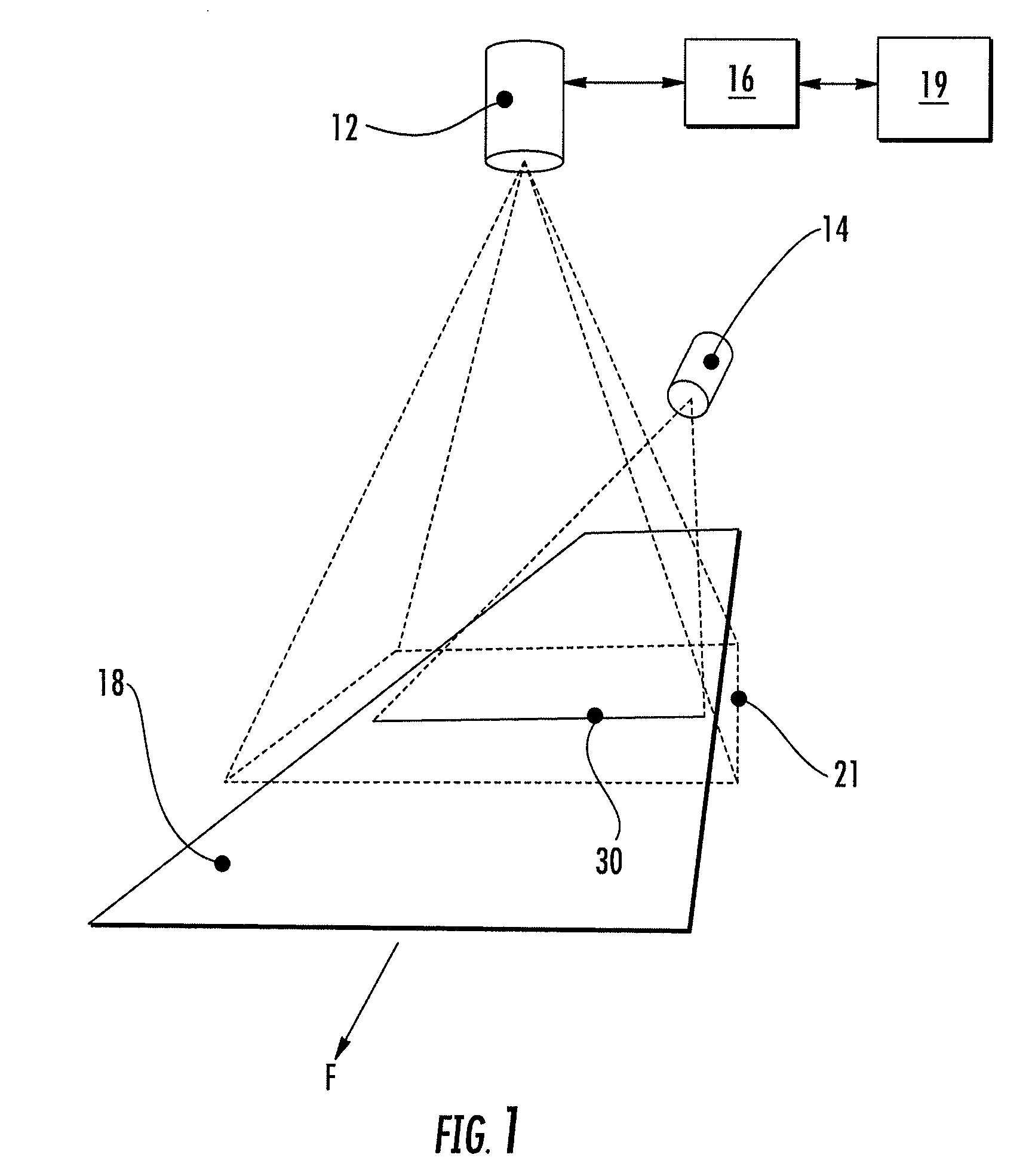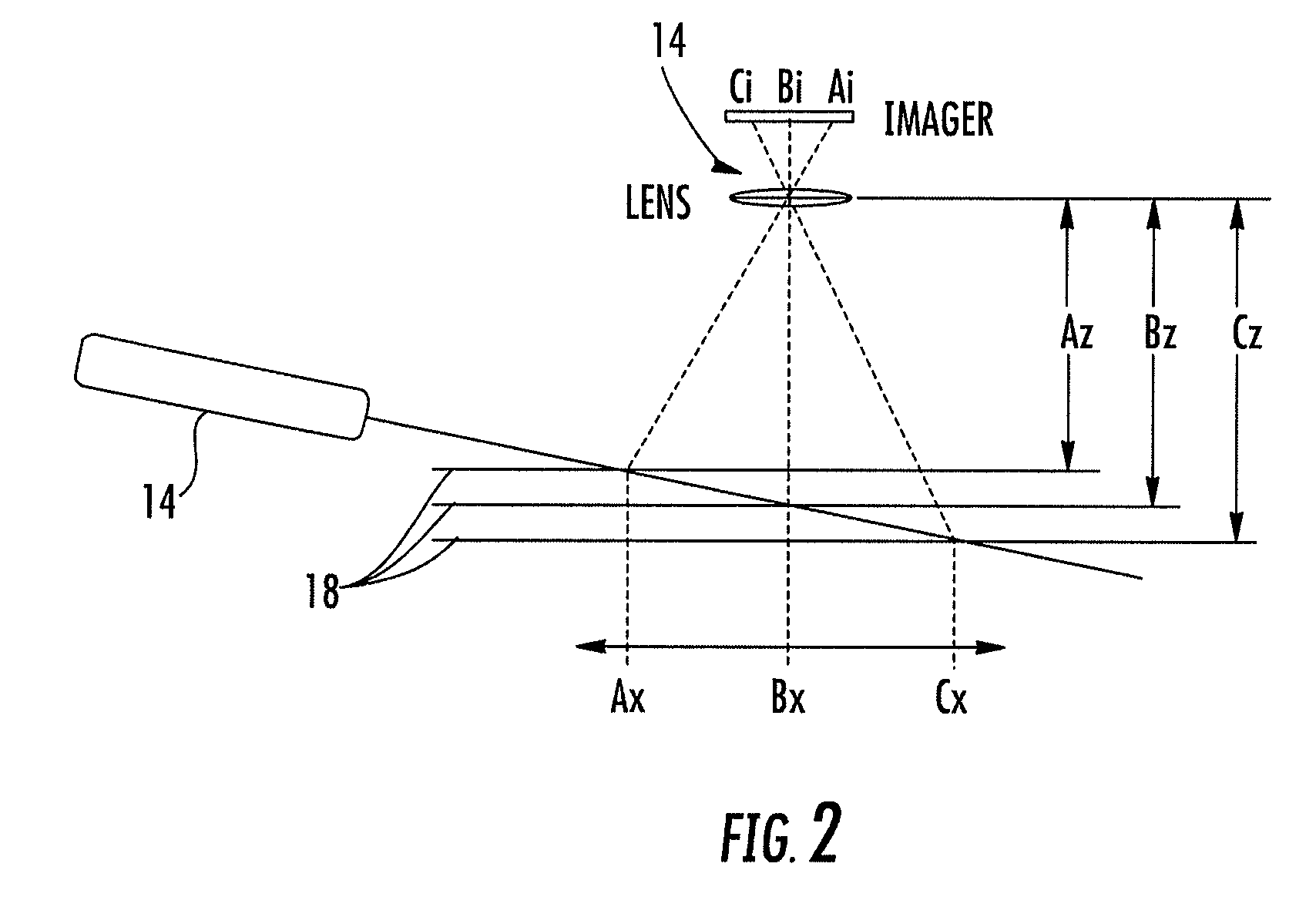Apparatus and methods for two-dimensional and three-dimensional inspection of a workpiece
a technology of two-dimensional and three-dimensional inspection and workpiece, applied in the field of workpiece inspection, can solve the problems of unreliable, inefficient, subject to operator error, limited capacity to meet these requirements, and assumption proved unworkable in the real world,
- Summary
- Abstract
- Description
- Claims
- Application Information
AI Technical Summary
Benefits of technology
Problems solved by technology
Method used
Image
Examples
Embodiment Construction
[0029]The present invention now will be described more fully hereinafter with reference to the accompanying drawings, in which some, but not all embodiments of the invention are shown. Indeed, the invention may be embodied in many different forms and should not be construed as limited to the embodiments set forth herein; rather, these embodiments are provided so that this disclosure will satisfy applicable legal requirements. Like numbers refer to like elements throughout.
[0030]Referring now to the drawings and, in particular to FIG. 1, there is shown an inspection system 10 for identifying and locating features in a workpiece. The system 10 includes a camera 12 and at least one illumination source 14, in some combination determined by the type of workpiece to be inspected, that acquire data indicative of the workpiece 18. The camera 12 and illumination source 14 are in communication with a data system 16 such that the data system may provide and / or process data captured by the came...
PUM
| Property | Measurement | Unit |
|---|---|---|
| incidence angle | aaaaa | aaaaa |
| incidence angles | aaaaa | aaaaa |
| thickness | aaaaa | aaaaa |
Abstract
Description
Claims
Application Information
 Login to View More
Login to View More - R&D
- Intellectual Property
- Life Sciences
- Materials
- Tech Scout
- Unparalleled Data Quality
- Higher Quality Content
- 60% Fewer Hallucinations
Browse by: Latest US Patents, China's latest patents, Technical Efficacy Thesaurus, Application Domain, Technology Topic, Popular Technical Reports.
© 2025 PatSnap. All rights reserved.Legal|Privacy policy|Modern Slavery Act Transparency Statement|Sitemap|About US| Contact US: help@patsnap.com



